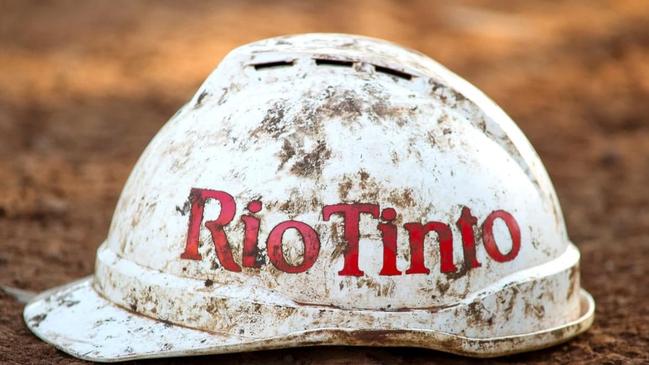From rust to gold: Rio Tinto strikes riches
The miner has unveiled its long-awaited first resource at its Winu discovery in WA’s Pilbara region.

Rio Tinto has unveiled its long-awaited first resource at its Winu discovery in WA’s Pilbara region, pulling the covers back on a low-grade deposit and saying it has hit promising gold results not far away.
The results, released ahead of Wednesday’s half-year results, show extensive drilling at the prospect has revealed a copper and gold deposit at Winu with an estimated 503 million tonnes of ore grading an average 0.45 per cent copper equivalent, including a “higher grade” component of 188 million tonnes at 0.68 per cent copper equivalent.
Rio’s first formal review of the size of the deposit suggests it is well beneath Rio’s former standard of only investing in so-called Tier 1 operations.
But outgoing Rio exploration and development boss Steve McIntosh told The Australian the initial mineral resource does not include any drilling results from the project in the last 12 months, which are still being compiled and are expected to be included in a more comprehensive review of the project early next year.
“By the end of year the company will be able to say more about timing and scale, and start to address the other questions that are in people’s heads. But we’re just not at that point today,” he said.
Rio recently pumped $122m into Rio Tinto Winu Pty Ltd, the holding company that will develop the deposit. By October last year Rio had spent an estimated $80m on drilling out the deposit, not including the cost of building an airstrip and associated infrastructure.
Bu, with the drilling rigs still turning in the Pilbara desert sands, Rio also revealed several promising gold hits not far from the main Winu deposit, titling one Ngapakarra, and disclosing a new set of drilling results including 23 metres at 4.53 grams a tonne gold, from 120m down hole, including a high grade zone of 0.75m at 97.1 grams a tonne gold.
The same hole intersected a similar width of gold mineralisation grading an average 4.87 grams a tonne from 349m deep.
Those results suggest Mr McIntosh’s strategy of starting small, with the hope of building up a district-scale operation spanning multiple deposits, may be paying dividends.
Mr McIntosh said Rio was working towards an initial “small-scale start-up operation focused on Winu’s higher-grade core”.
“We’ve explored less than 2 per cent of our total holdings. We’ve been at this for just over two years, and we’re really trying to do this a little bit differently and be agile, innovative and purposeful,” he said.
He said that Rio had also conducted aerial and geological surveys over vast areas of the region it controls, yielding plenty of other promising options.
“We’ve got a lot of targets in the cupboard waiting to be progressed, and we’re really excited by what we see,” he said.
Rio recently filed environmental approval documents for a 7 million tonne a year operation at Winu, saying it hoped to get the discovery into construction by mid-2021.
The documents outlined early-stage plans to build a single open pit mine, with a centralised mineral processing facility, power plant and an air strip capable of taking a commercial jumbo jet full of FIFO workers.
While Rio noted its plans are subject to change as feasibility studies progress at Winu, it said it was initially targeting a 7 million tonne a year mining rate at the project “subject to change as the project progresses”.
Rio will deliver its half-year results late on Wednesday afternoon, with analysts expecting the company to fall short of last year’s results.
Analyst consensus tips earnings before interest, tax, depreciation and amortisation at $US9.3bn, down from $US10.4bn, with underlying earnings of $US4.4bn, down from $US4.9bn in 2019.
With strong iron ore prices holding up in the first half of 2020, analysts expect EBITDA from Rio’s dominant iron ore division to be roughly in line with last year’s $US7.5bn, with the company’s overall result likely to be weighed down by lower commodity prices in its aluminium and copper divisions.
Rio booked EBITDA of $US1.1bn from its aluminium division in the first half of 2019, and consensus estimates tip that to fall to $US772m, with copper and diamond division earnings likely to be down sharply, from $US1.2bn in 2019 to $US544m in the first half of 2020.
Rio shares rose $1.22 on Wednesday to close at $104.11.


To join the conversation, please log in. Don't have an account? Register
Join the conversation, you are commenting as Logout